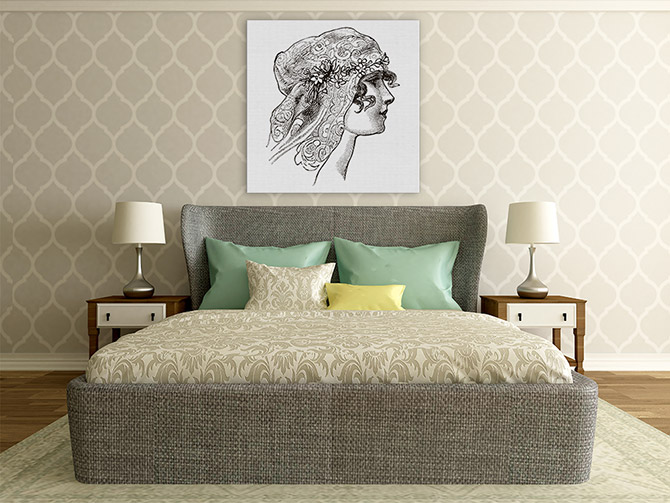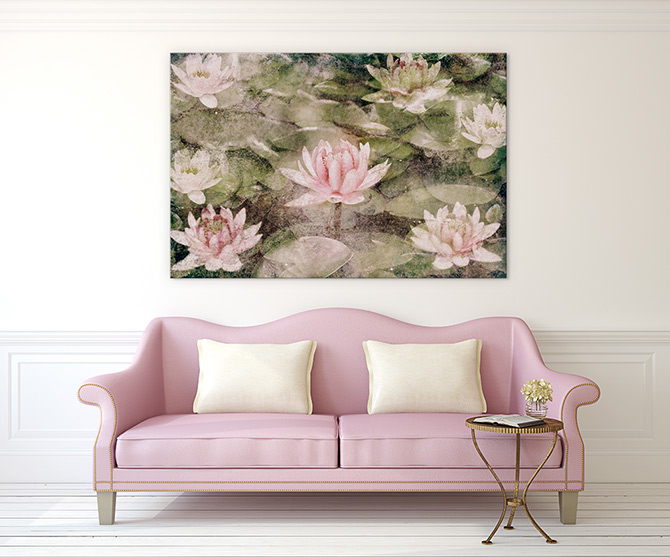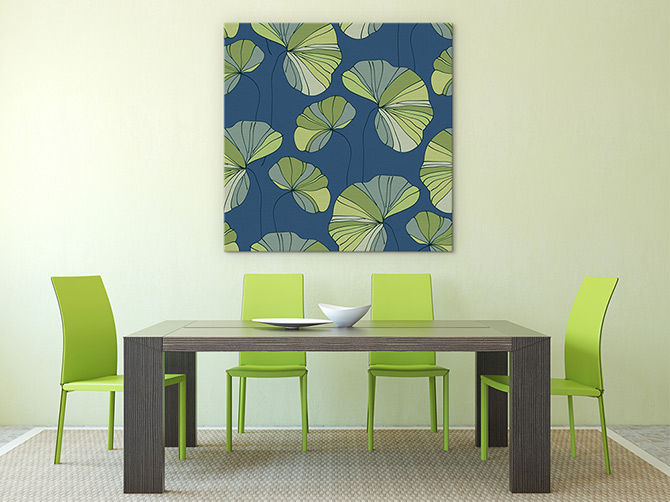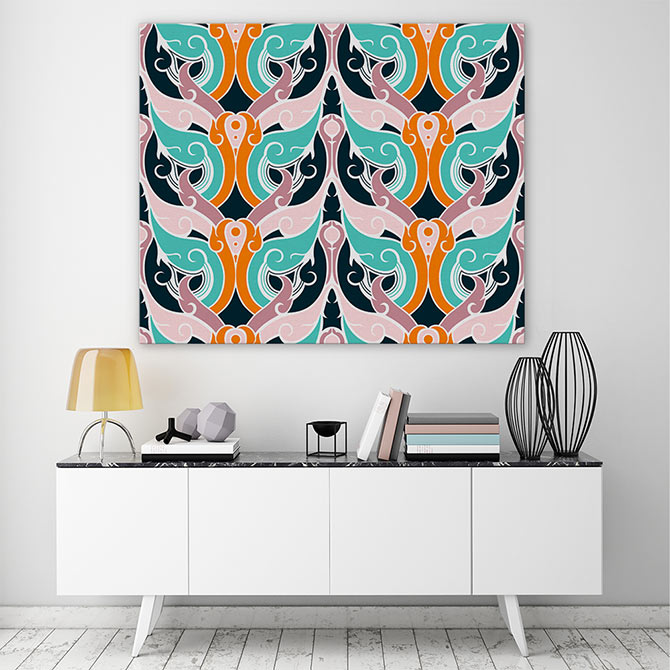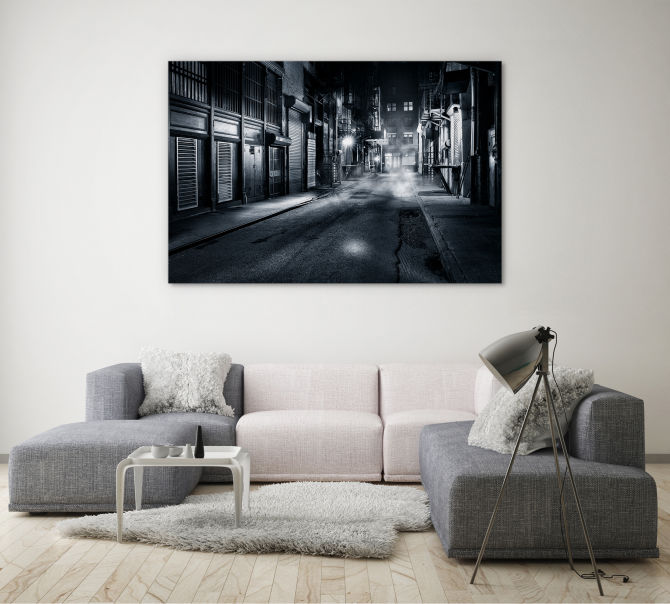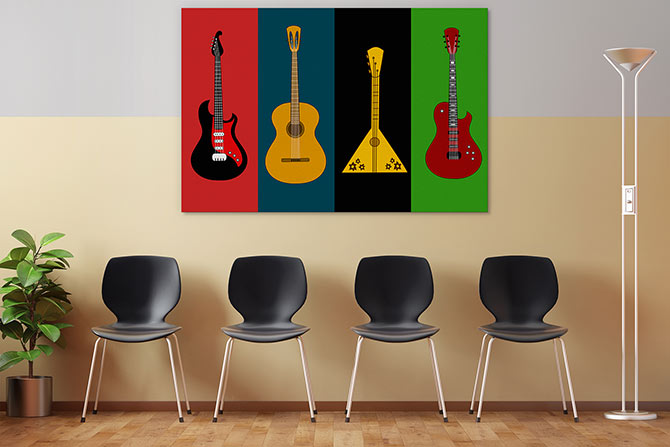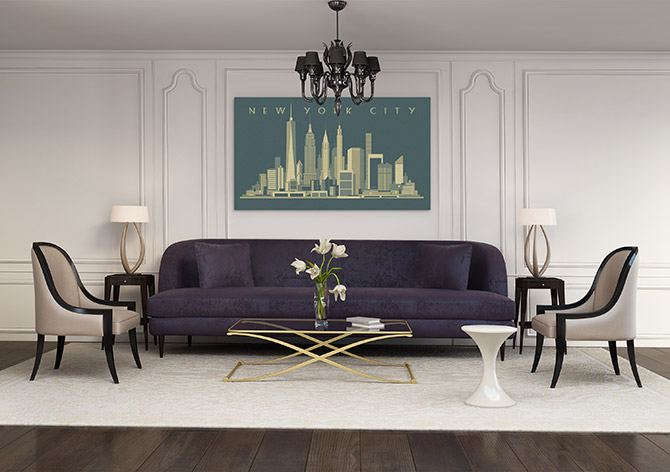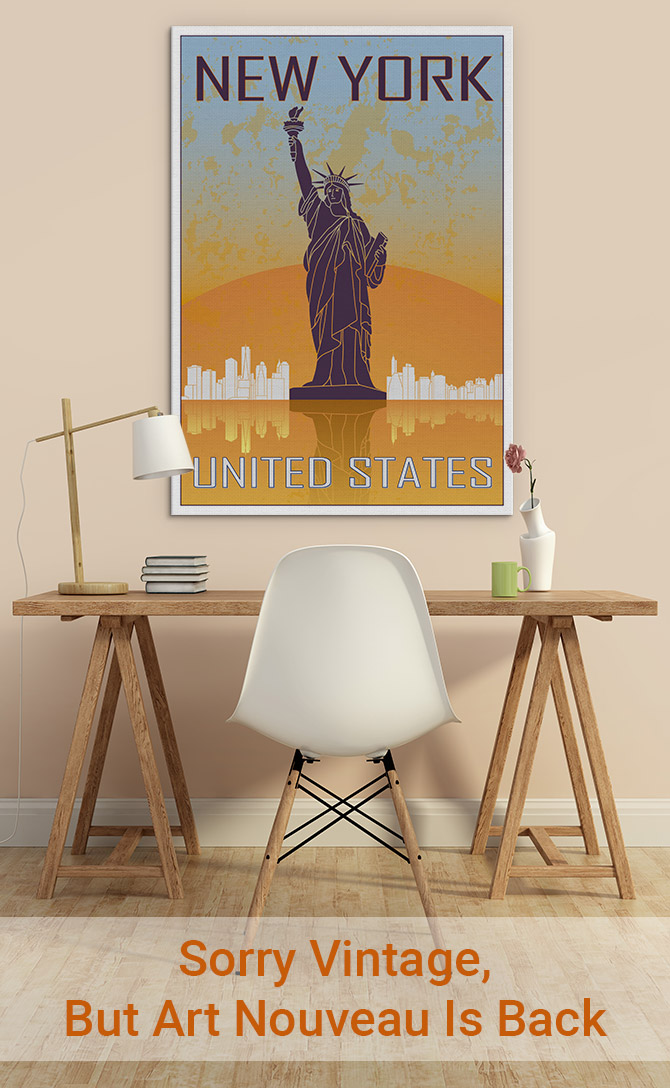
Sorry Vintage, you aren’t the be all and end all anymore. You might be high quality, but it’s no longer good enough simply to be old (or look old). We’ve all been there and done that now.
We’ve found a new old thing to take your place. We’ve rediscovered Art Nouveau.
Popular during the 1890–1910s, Art Nouveau is inspired by the unruly aspects of the natural environment. It uses curved lines, the ‘whiplash’ line, vertical lines and organic forms. Its style includes female silhouettes as well as stylised flowers and leaves.
The style was used by artisans, graphic designers, illustrators and architects and was considered a new uncontrolled style of art, free of mimicry and criticism.
The wonderful thing about this ground-breaking movement is that, like anything Vintage, it valued quality. However, it was also fine with mass production – making it more accessible for everyone to enjoy.
Here we take a look at three forms typical of this period – mosaic, pattern and poster art. We also present two interior design approaches to the movement – the feminine and the masculine.
Art Nouveau is back. And we’re loving it.
Mosaic Art
The movement embraced mosaic art in interior design and architecture, with original examples still visible in places like Barcelona, Paris, Germany and England.
The circular frame is also quintessentially Art Nouveau, making this wall art print, below, a wonderful interpretation of a bygone era that’s now possible to enjoy in our own homes.
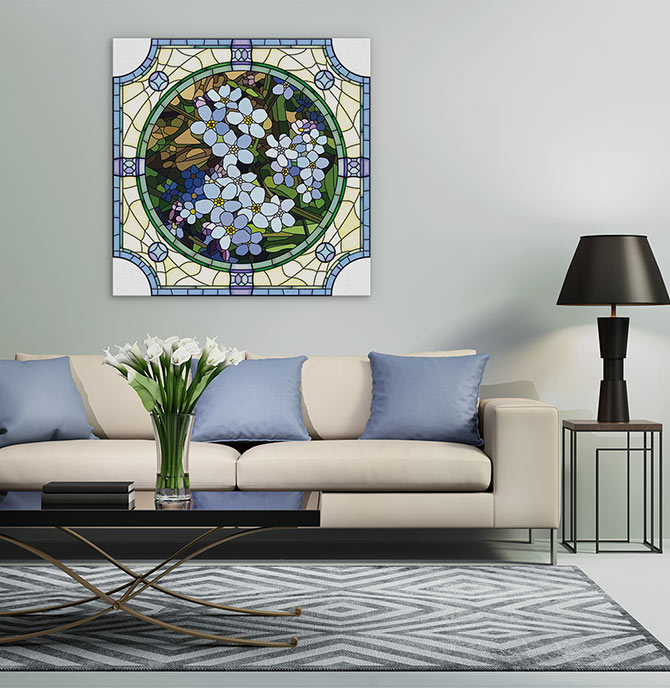
ELABORATE: This beautiful ‘Blue Forget-me-not’ print draws inspiration from the movement’s major contribution to mosaics.
Pattern Art
In its time, this ‘nouveau’ style of modern art was innovative, international and fashionable. Patterns were popular, often depicting objects from nature – flowers, stalks, buds, vines and insects.
This aesthetic also included decorative and compelling patterns, using the trademark ‘whiplash’ line or motif which is sensual and feminine.
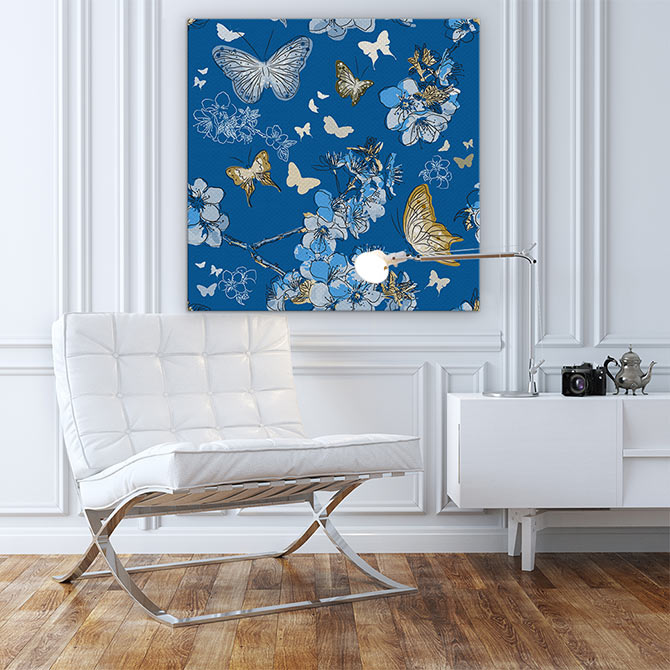
NATURE’S MUSE: This ‘Golden Butterflies’ pattern print combines flora and wings to create a bright decorative work of art.
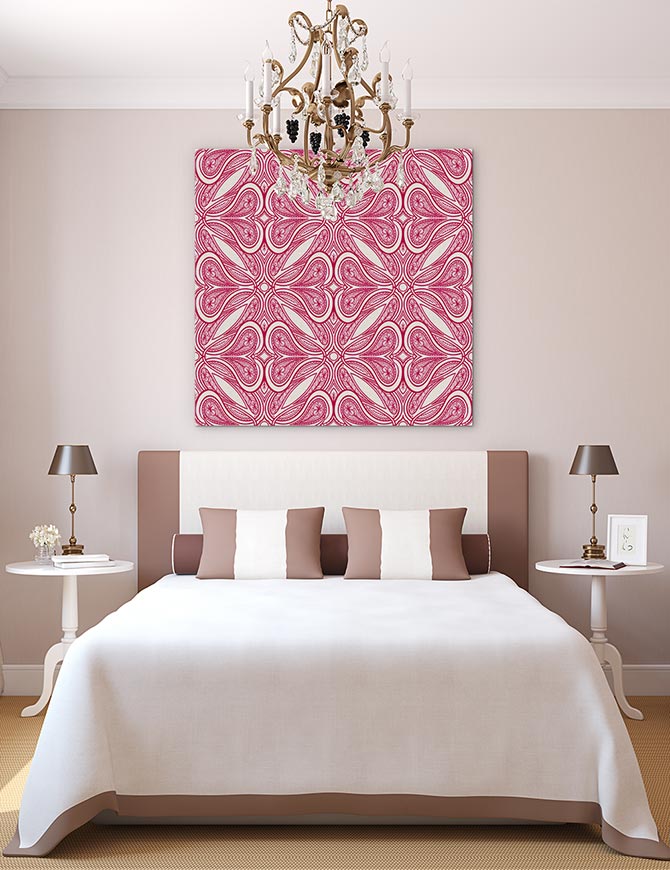
SENSUAL: This ‘Deco Nouveau In Pink’ pattern print borrows from the Art Deco and Nouveau movements, using the distinctive sensual ‘whiplash’ effect.
Poster Art
Graphic designers loved this movement as there was so much diversity, from Pre-Raphaelite paintings to the 1980s poster craze – Belle Epoque.
Today we’re seeing a resurgence of Art Nouveau through photography and poster art, using contemporary methods and 21st Century landscapes to recreate the new to look old – a dedication to what was a fascinating movement.
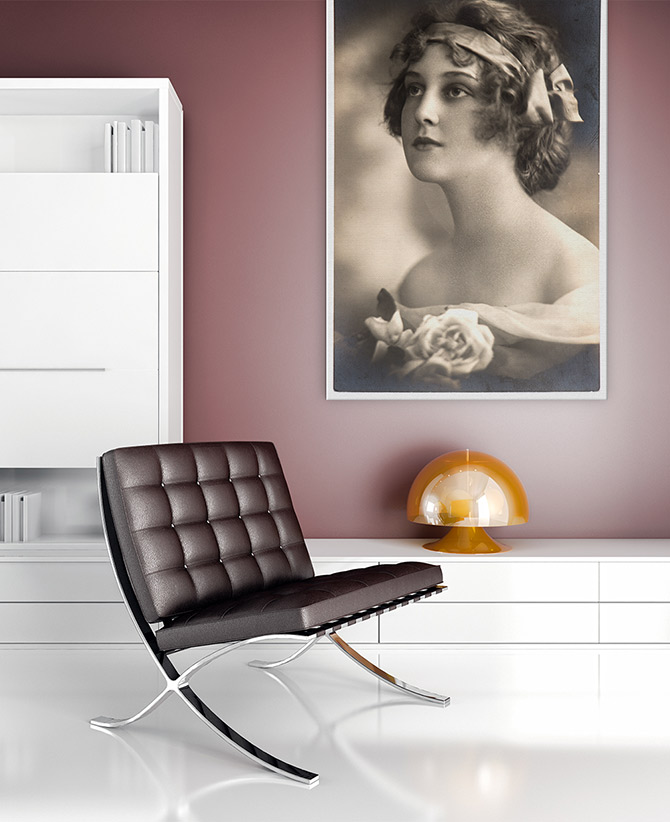
WONDER: This ‘Days Gone By’ print from our Photography Collection is a dedication to Pre-Raphaelite paintings.
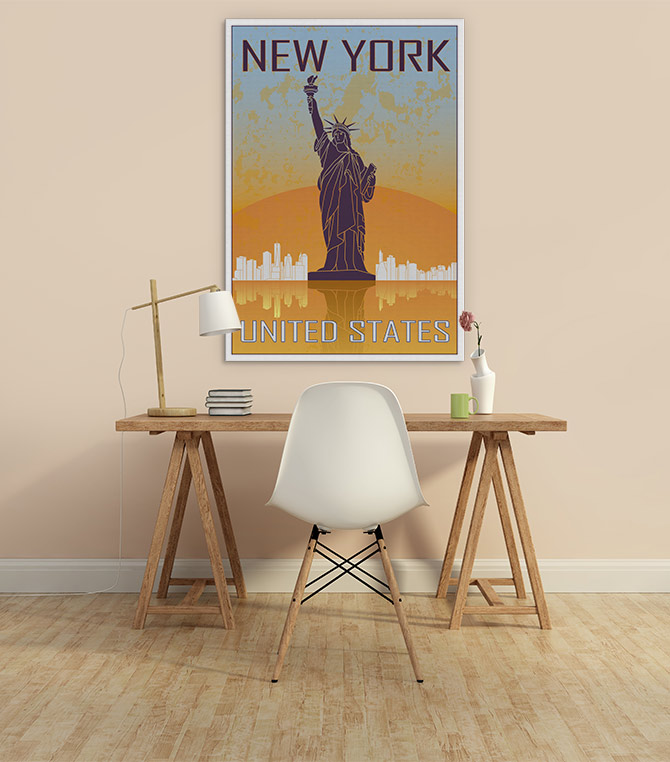
BIG CITY LIGHTS: The spread of the poster is making a comeback, with this ‘New York’ poster style print a funky addition to an office or bedroom space.
Feminine Art
Some aspects of this style of art were overtly feminine, with the feminine silhouette a typical motif and floral forms taking the place of academic art.
Today, the female form in Vintage art – particularly the head – is now synonymous with Art Nouveau. Today, artists inspired by this movement experiment with colour, form and paint.
Masculine Art
While Art Deco is known as the more masculine movement, there are elements of the Nouveau movement that are bold and strong. Of course, that is if feminine means curves and organic forms and masculine means straight lines and geometric forms.
In the 21st Century, we now know how important it is to step outside of those traditional gender definitions. This leaves much room for a new representation of masculinity, a new twist born from the art style’s recent revival.

